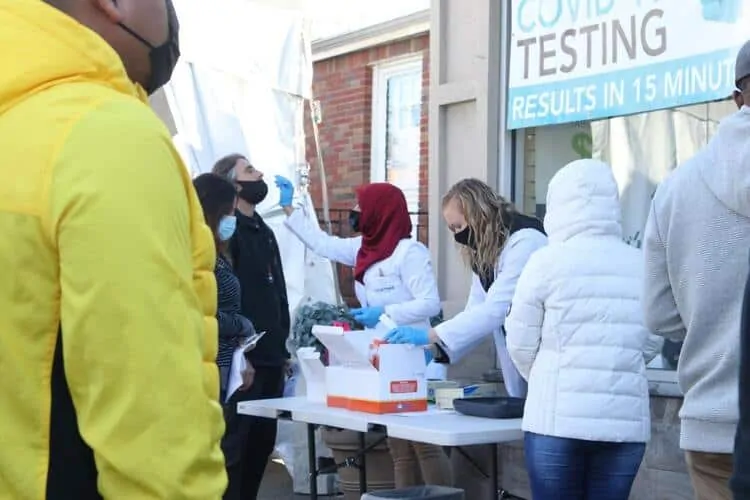As of September, the Centers for Disease Control and Prevention (CDC) have changed their position on COVID-19 testing for asymptomatic people. Though their recommendations still prioritize people with symptoms, the CDC now explicitly includes people who have had close contact with someone with a confirmed case of COVID-19, regardless of whether they themselves have symptoms.
The CDC now recommends testing for the following groups:
- People with active symptoms of COVID-19
- People who have had close contact (within 6 feet of an infected person for a total of 15 minutes or more) with an infected person
- People who have been asked to get testing by their healthcare provider, local, or state health department
It’s not clear why the CDC made the change, but it may be due in part to higher availability of testing supplies in many parts of the country.
Read the full CDC recommendation on testing for COVID-19.
The Benefits of COVID-19 Testing for Asymptomatic People
For a long time, many health organizations discouraged asymptomatic people from seeking testing in order to prioritize symptomatic people and frontline workers. But wider testing of asymptomatic people in addition to symptomatic people gives us more accurate data about community spread and helps with contact tracing.
Asymptomatic COVID-19 Testing Quick Facts
- Not all cases that seem asymptomatic remain that way. You can start without symptoms and develop symptoms later, even after getting negative test results. This is known as being pre-symptomatic. It can take several days for enough of the virus to accumulate in your system to show up on a test.
- Many don’t notice “hidden symptoms.” Some people may be unaware that they are actually symptomatic, especially if their symptoms are mild.
- 1 in 5 cases will remain asymptomatic. When controlling for cases that are not symptomatic at the time of diagnosis but become symptomatic later, several studies estimate that about 20% of COVID-19 cases are truly asymptomatic.
- Asymptomatic people are still contagious. People without symptoms can and do spread COVID-19, which is why the testing of asymptomatic people can be so helpful for data and contact tracing. Some experts believe that asymptomatic people may not spread the virus as efficiently as those with symptoms, but there is disagreement over this theory.
The Type of Test Matters
There are several distinct types of tests for active COVID-19 detection. Traditional PCR and RT-PCR are currently the most reliable for detecting active infection, and can be used on asymptomatic people.
Another option is an antigen test, sometimes called a “rapid test.” While results can be obtained much faster than from PCR tests – in as few as 15 minutes, compared to days for PCR – these tests are much less accurate. Some data suggests that rapid tests can have a false negative rate as high as 50%. In fact, it has been suggested that the White House outbreak in early October was caused partly by a reliance on rapid tests that were designed to be used only “within the first seven days of the onset of symptoms.” In other words, the tests were not designed for asymptomatic people.
If you do not have symptoms but have had close contact with an infected person, it’s important that you get a PCR test, the most accurate type of test, ideally 5-9 days after your last contact.





